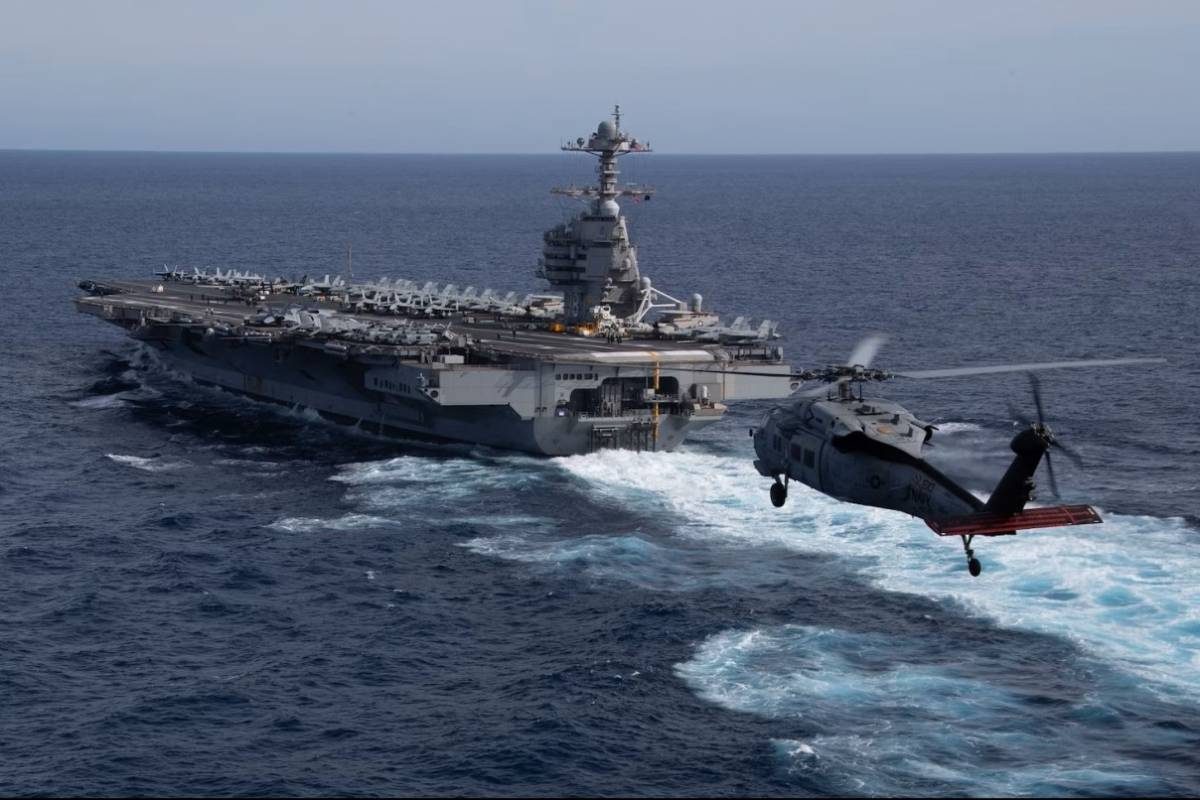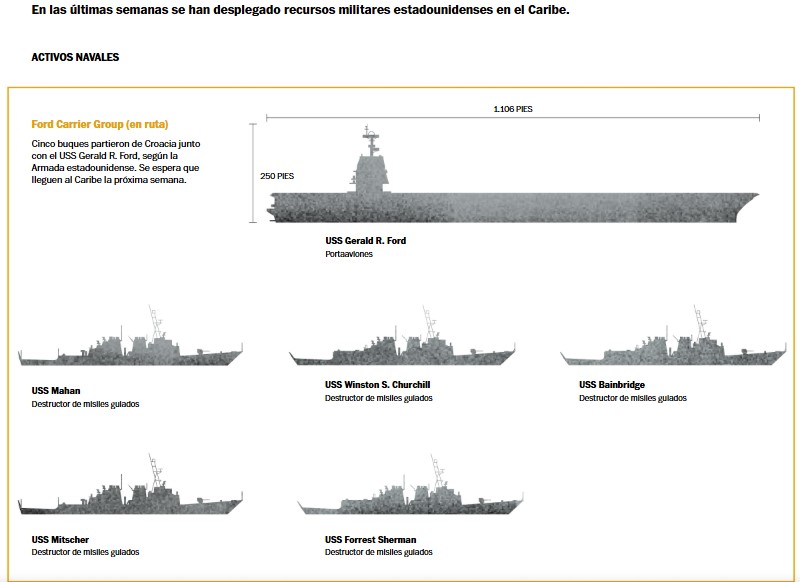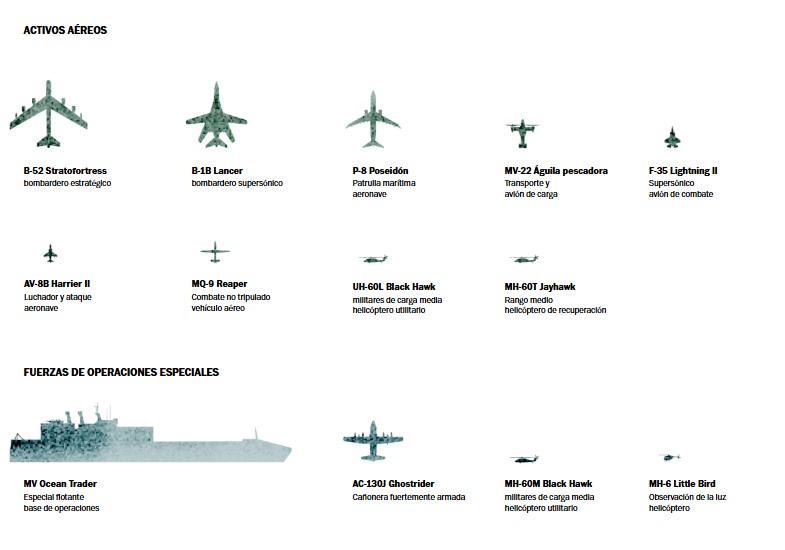
The large-scale deployment of US military forces and resources in the Caribbean suggests that the Trump administration is preparing to expand operations in the region, increasing tensions between Washington and Caracas and raising the possibility of the first US attacks against Venezuela.
U.S. forces in the Caribbean include eight Navy warships, a special operations vessel, and a nuclear-powered attack submarine. When the aircraft carrier USS Gerald R. Ford arrives in the Caribbean next week, it will bring three more warships and over 4,000 additional troops.



President Donald Trump has indicated that he is planning to escalate operations against Venezuelan President Nicolás Maduro, but when asked on Friday if he was considering military strikes inside Venezuela, he replied “no.”
The Pentagon has acknowledged carrying out more than a dozen attacks against suspected drug-trafficking ships, in which at least 61 people have died since September.
From the outset, the Pentagon's deployment in the Caribbean has far exceeded what is needed for a counternarcotics operation, suggesting that the mission was always"prepared to evolve," said Ryan Berg, director of the Americas Program and the Center for Strategic and International Studies.
But Berg asserted that the addition of the carrier strike group could signal that an expansion of operations is imminent. Competition for these ships is fierce, he said, as only three are deployed simultaneously. Once the Ford arrives in the Caribbean next week, a countdown will begin, and Trump will have roughly a month to make a major decision about an attack before having to move the ship elsewhere.

Democrats in Congress have accused the Trump administration of not sharing the legal justification for the attacks.

